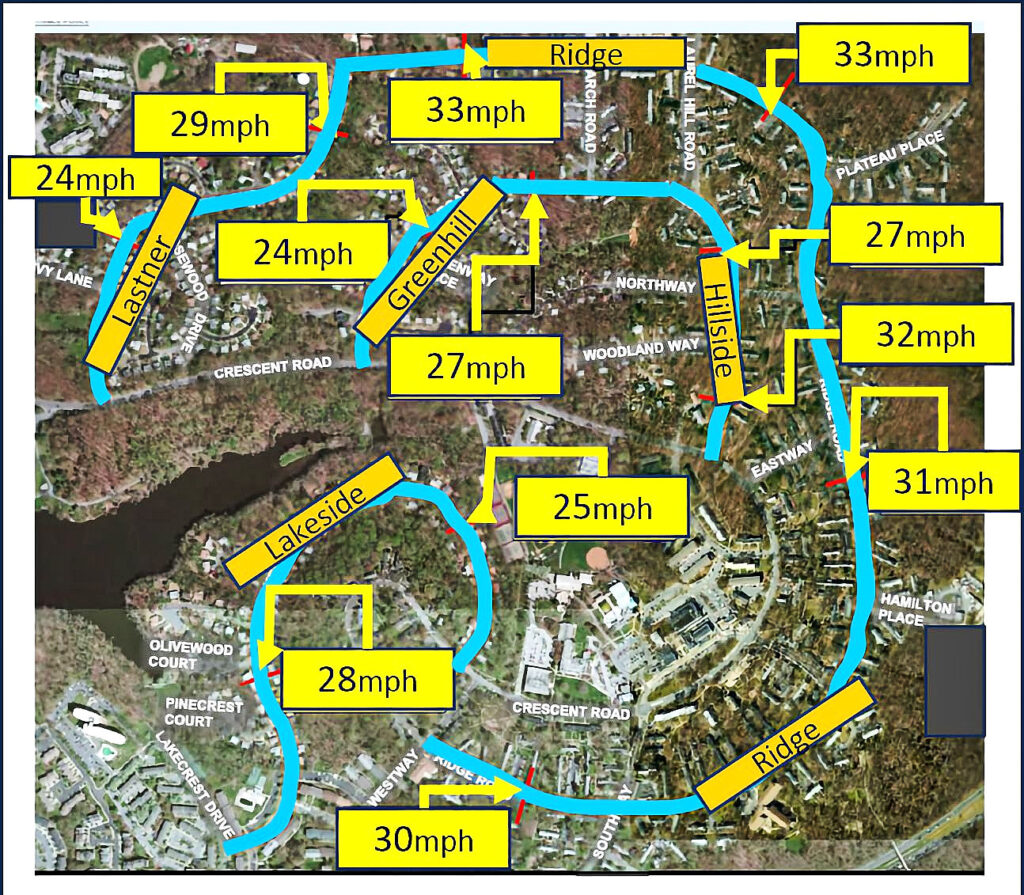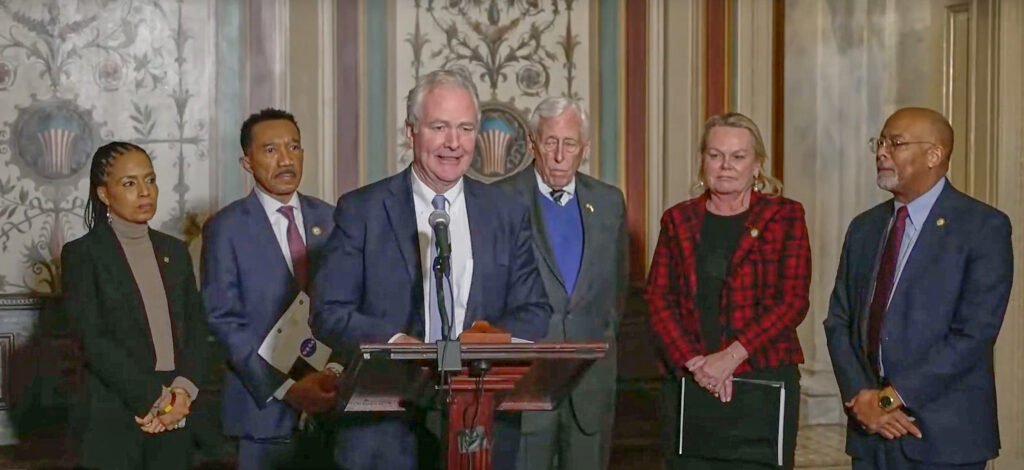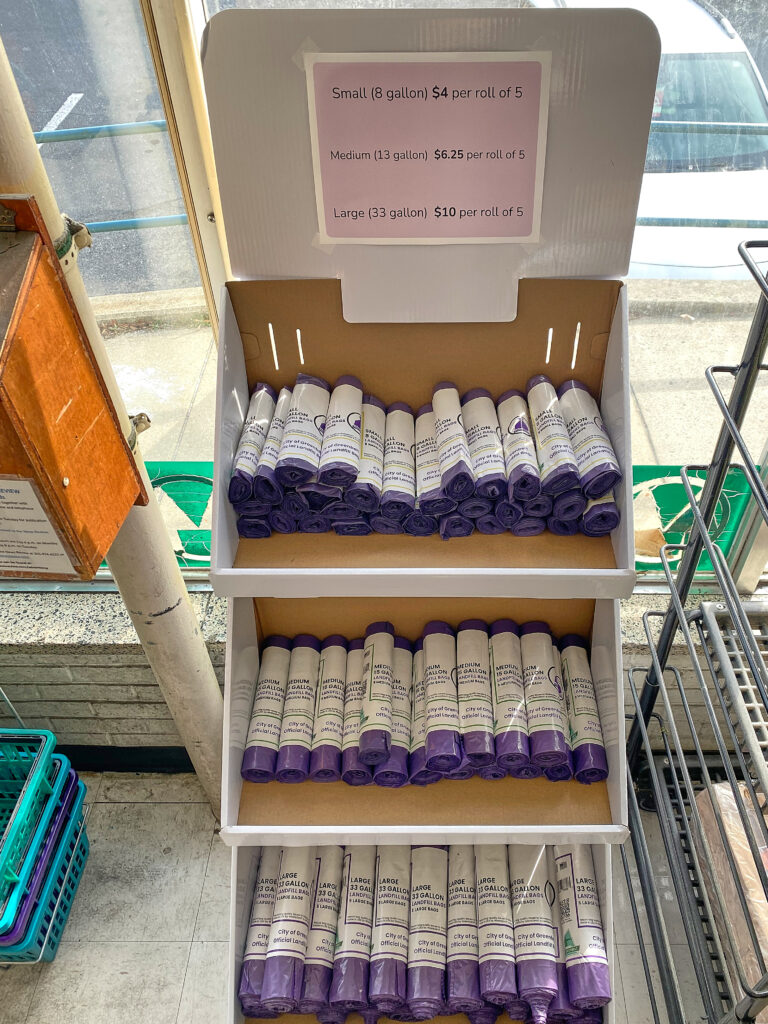Susan Ives, who works with the Living New Deal (livingnewdeal.org), came to visit Greenbelt from Berkeley, Calif., and visited many historic Greenbelt institutions, including the Forest Preserve, New Deal Café, Greenbelt News Review, Old Greenbelt Theatre, Greenbelt Co-op Supermarket, Greenbelt Museum, Greenbelt Community Center and Greenbelt Access Television (GATe) – all coordinated by her friend, local Greenbelt environmental activist Susan Barnett. Also joining us at the New Deal Café was Amethyst Dwyer, the former music coordinator who put the Café on the map as an award-winning music venue.
“I’m thrilled to be in Greenbelt,” Ives said. “I’ve been reading and writing about the town for so long.” Ives manages communications and events for the Living New Deal and edits its monthly newsletter, The Fireside.
In Maryland, the Living New Deal has documented 153 New Deal sites. This website uses crowdsourcing to catalog and investigate an ever-growing list of over 17,500 New Deal sites around the country. The Living New Deal is the first national database documenting the towns, post offices, schools, parklands, artworks, murals and more constructed through New Deal programs including the Works Progress Administration, Civilian Conservation Corps and many others. The Living New Deal’s latest print map may be obtained from the Greenbelt Museum, alerting users to 500 New Deal sites around Washington, D.C., highlighting 34 notable sites as well as the area around the National Mall.
“The New Deal is all around us but often is unseen,” Ives pointed out, an omission that the website seeks to remedy. The project got going around 10 years ago, after geography students at the University of California at Berkeley began to map New Deal projects, and then turned to crowdsourcing to learn more about obscure and forgotten sites. Ives pointed out, “There’s now a phone app where you can send in the description and the GPS coordinates. There are probably hundreds of sites out there yet to be discovered. Around the beginning of World War II, records [of New Deal projects] were lost, or never documented in the first place.”
The Living New Deal also offers webinars such as one beginning in October about endangered New Deal art.
Ives and Barnett spent an enriching morning walking through the Greenbelt Forest Preserve with Owen Kelley, member of the Greenbelt Biota natural history society and author of A Hundred Wild Things: A Field Guide to Plants in the Greenbelt North Woods, a book with over 200 photographs of different species and descriptions of their ecological role and their natural history in Greenbelt. Barnett pointed out, “The woods come more alive when we share them with someone new. The huge and ongoing effort to save and protect our forest is the right thing to do, and in many ways the forest is what defines us.”
Ives had lunch at the New Deal Café, with Barnett, News Review editor Mary Lou Williamson, and Frank and Susan Gervasi, whose film Defending Utopia inspired Ives to visit Greenbelt. Barnett noted that Williamson “helped to create a story that continues to inspire us all,” referring to the News Review case that went to the Supreme Court in the late 1960s. Amy Hansen, who was managing editor until recently, also met Ives at the office in the Community Center where the News Review continues to be produced every week.
Ives was treated to a behind-the-scenes look at the historic Old Greenbelt Theatre by Director of Operations Stephenie Arcido, viewing the main auditorium and the new screening room and even climbing the spiral staircase up to the projection booth. Greenbelt Museum Director Megan Searing Young gave Ives a special tour of the Museum, as well as a peek at the house next door which is being developed into a visitor center. At the Community Center, Ives examined the bas reliefs of the Preamble to the Constitution and looked at the exhibit about sculptor Lenore Thomas Straus, as well as the historic photographs lining the halls. Ives rounded out her visit with an outdoor interview with Frank Gervasi, filmed by Phoebe McFarb for GATe, followed by a quick tour through the well-stocked aisles of the Co-op, where so many impromptu “Greenbelt moments” occur.



